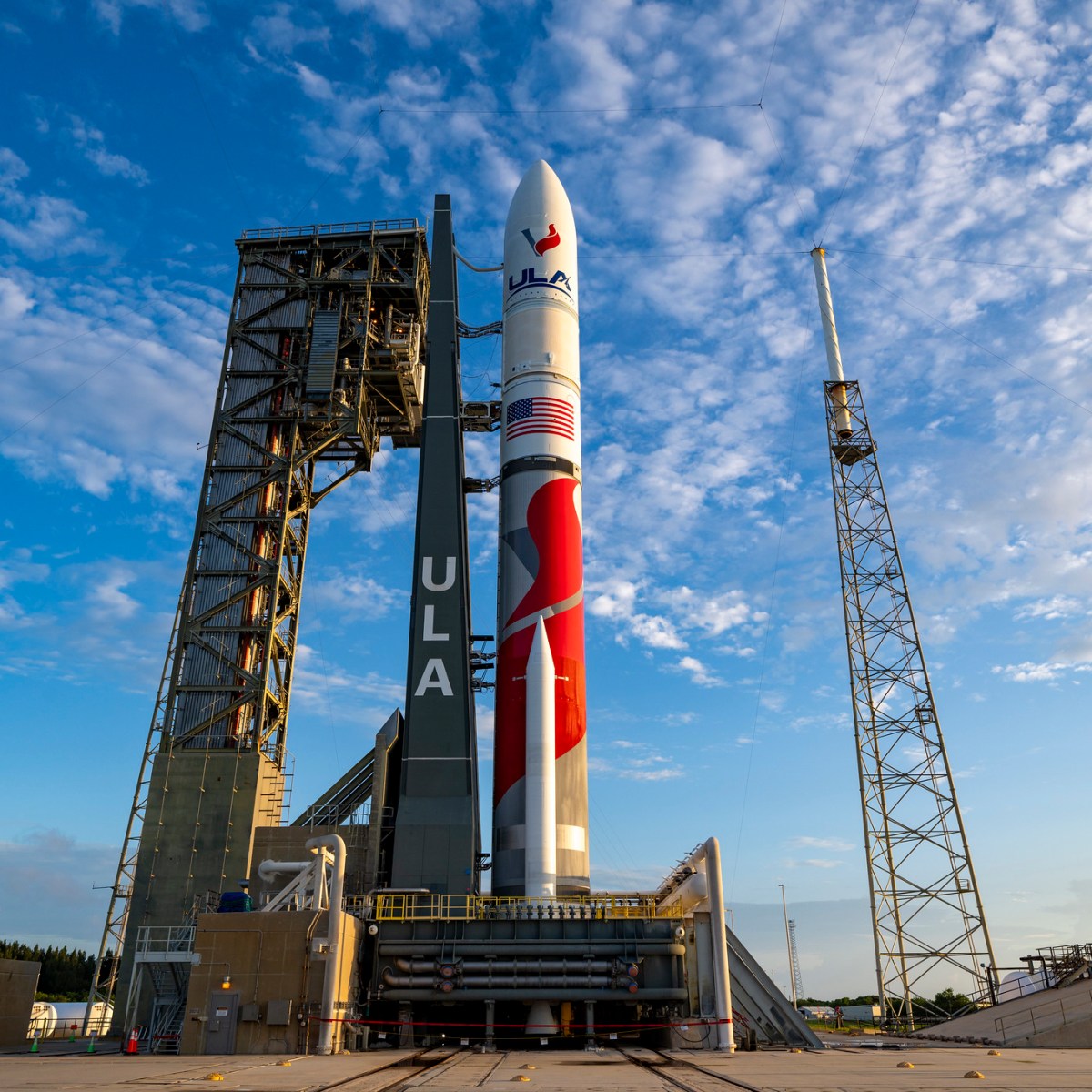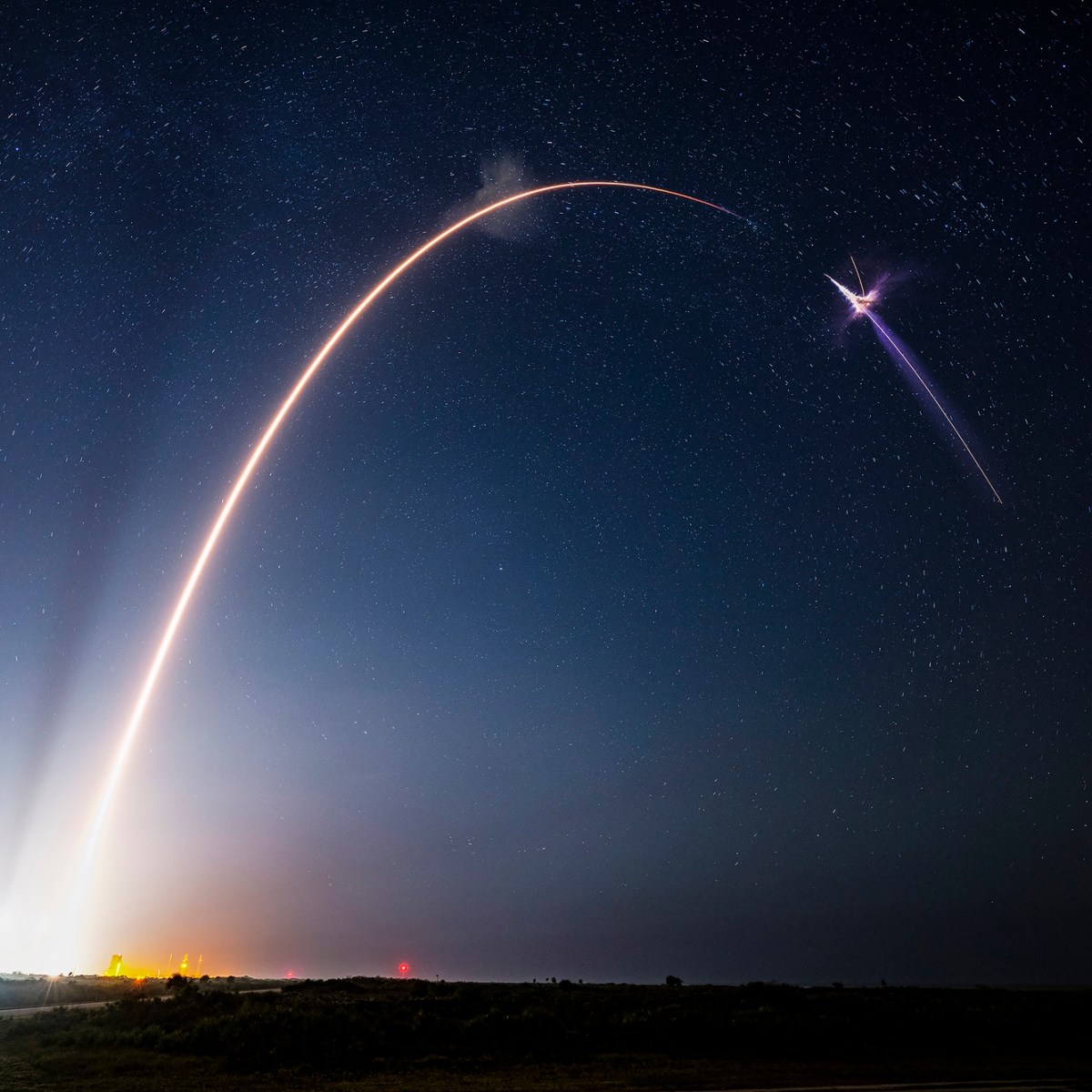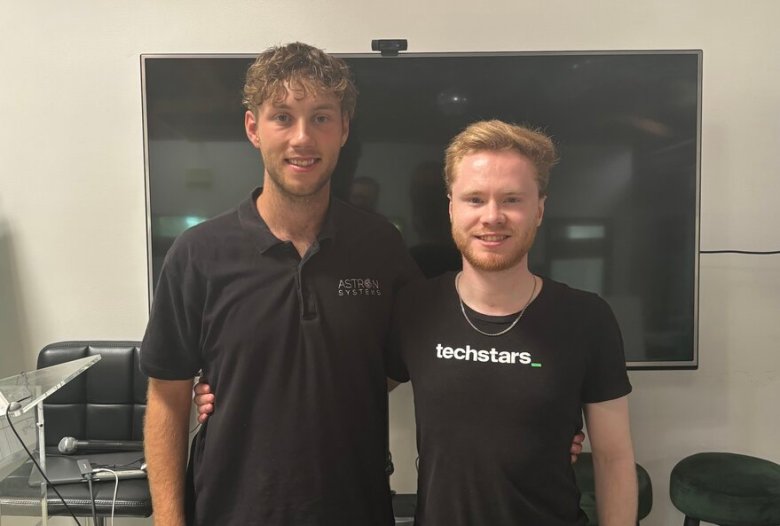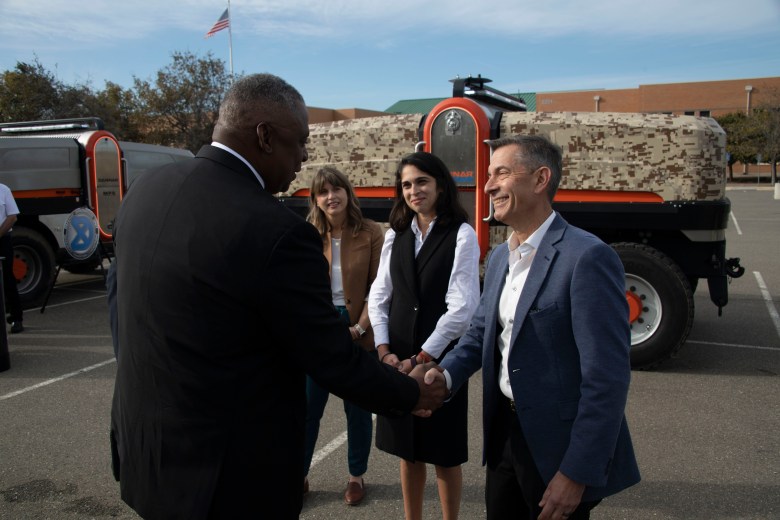Updated 10:30 p.m. Eastern with disposal orbit for the Centaur.
WASHINGTON — United Launch Alliance is ready for a second test flight of its Vulcan Centaur rocket as it gears up for a sharp increase in launch activity next year.
ULA announced Oct. 2 that it was in final preparations for the Cert-2 launch of Vulcan Centaur, scheduled for a three-hour window that opens at 6 a.m. Eastern Oct. 4 at Cape Canaveral. The company completed a fueling test and practice countdown known as a wet dress rehearsal at the launch pad Oct. 1.
“It went very, very well and per plan,” Tory Bruno, chief executive of ULA, said of the wet dress rehearsal in an Oct. 2 call with reporters. “We’re on track.”
Cert-2 will be the second flight of Vulcan Centaur after a January launch, called Cert-1 by ULA, that launched Astrobotic’s Peregrine lander towards the moon. This mission will carry a mass simulator of Peregrine after Sierra Space determined in June that its Dream Chaser spaceplane would not be ready in time for a fall launch.
Cert-2 “literally has one primary objective, which is to go fly a second time and have another success,” Bruno said. That would clear the way for the U.S. Space Force to certify Vulcan for national security missions, with the company’s goal of launching two of them, designated USSF-106 and USSF-87, before the end of the year.
A successful launch will not result in an instant certification of the rocket, though. Brig. Gen. Kristin Panzenhagen, the U.S. Space Force’s program executive officer for assured access to space, said last month that the service will need “some time” after the launch to review data from Cert-2 before formally certifying it.
Bruno said ULA will first do its own analysis of data from the flight before handing it over to the Space Force for its assessment. “If the mission is very clean, like the Cert-1 mission, that goes pretty quickly,” he said of that internal assessment. “That will be done in weeks, not months.” He deferred to the Space Force regarding how long it will take them to certify the vehicle, but expected it to be “a short number of weeks.”
That scheduled would keep USSF-106 and -87 on schedule to launch this year. The company is already preparing for the first of those two missions ahead of certification, work that will continue short of payload integration while awaiting Space Force certification.
Besides collecting the data needed for certification, ULA plans to conduct its own experiments focused on the Centaur upper stage. “We have a number of experiments that we are conducting that are really technology demonstrations and measurements that are associated with our high-performance, long-duration version of Centaur 5,” he said.
Those experiments, he said later, involve confirming analytical models of the technologies planned for the Centaur and seeing how well they work in the space environment. “Some of these are devices, some of these are maneuvers,” he said, as well as overall performance of the upper stage, but did not go into specifics.
Those demonstrations are intended to advance work on a future version of Centaur that will be able to operate in orbit for days or weeks, rather than hours. That involves ways to minimize the boiloff of the stage’s liquid hydrogen and liquid oxygen propellants by preventing energy from the sun from getting into the stage, and keeping the energy that does get into the stage from warming the propellants. It also involving limiting use of other consumables, like hydrazine used in thrusters for attitude control.
That would extend the Centaur ‘s lifetime from 12 hours to weeks or even months. “What that would allow us to do is to have an in-space transportation capability for in-space mobility and servicing and things like that,” he said. “It’s a pretty revolutionary capability if you can have that.”
The main part of the Cert-2 mission will last 35 minutes, from liftoff to completion of the second of two main burns of the Centaur upper stage. Those additional tests of the Centaur will take place after that but “not very much longer,” he said. Bruno said on social media after the briefing that the Centaur will be disposed in a heliocentric orbit.
Ramping up flight rates
The success of Cert-2 will also open the door for ULA to increase launch rates. Cert-2 will be just the fifth launch by the company this year, including two Atlas launches and the final Delta 4 Heavy.
Bruno said on the call that the company is planning 20 launches in 2025, “if all the spacecraft show up.” That will be a roughly even mix between Atlas and Vulcan launches for government and commercial customers.
Among them is Amazon, which will start launching its Project Kuiper satellites. The first Atlas launch of those spacecraft is now planned for early next year, rather than before the end of this year as previously scheduled.
“What’s driving that schedule is the schedule of the national security space satellites,” Bruno said, adding that ULA has been “very transparent” with Amazon about those schedule slips. “We’re working very closely with them to get their mission off, and right away.”
He added the company has room on that 2025 manifest for Dream Chaser, which was to fly on Cert-2. “It’s just a matter of when they’re ready to go,” he said, noting that ULA waited as long as it could to keep Dream Chaser on Cert-2 before it and Sierra Space concluded the vehicle would not be ready in time to launch this fall.
Because there is no paying customer on Cert-2, ULA is absorbing the full cost of the mission, which Bruno estimated in the “high tens of millions of dollars.” That’s why, he said, the company added the experiments to the flight to get as much value as possible out of it.
Asked in the call about overall development costs of Vulcan, he said there was a “rule of thumb” that large launch vehicles like it cost $5 billion to $7 billion. “Vulcan is not outside the rule of thumb,” he said, later saying it was “less than two-digit billions” to develop,
ULA has spent more than $1 billion on infrastructure needed to build and launch Vulcan at the company’s desired flight rate. That includes expanded factories and processing facilities as well as renovating a former Atlas launch pad at Vandenberg Space Force Base in California for Vulcan launches there.
That extends to purchasing a second ship to transport Vulcan vehicles from the ULA factory in Decatur, Alabama, to the Florida and California launch sites. “Even further down the road we are still potentially going to end up with an airship as well,” he teased, “which we can talk about some other time.”



